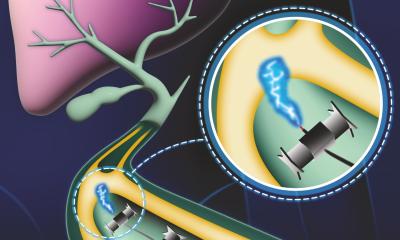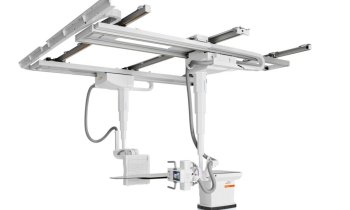The 27th World Congress of Endourology
Munich, Germany
6 - 10 October
Chip-on-the-tip and MiniPerc will be among the live demonstrations of new surgical tools and techniques expected to attract around 2,000 international specialists to this autumn’s congress.
In an interview with Karoline Laarmann (European Hospital) Professor Jens Rassweiler, WCE President and Medical Director at the Urological Clinic at Heilbronn Hospital, pointed out Germany’s lengthy presence in the development of endoscopy tools and discussed the contribution of such innovations to advances in endourology.
‘In recent years comparatively minor improvements in light and the video performance of optical devices have triggered enormous progress in our discipline: chip-on-the-tip technology significantly improved image quality, for example. With this technology, images are no longer transmitted via optical fibre in an endoscope but are acquired by a digital chip on the endoscope tip. This allows ureteroscopes to be thinner, because less technology has to be accommodated. In addition, modern ureteroscopes are flexible, which means stones can be imaged and treated with a laser beam at the same time. Additionally, such flexible ureteroscopes allow examination of difficult to access regions. The laser fibre is integrated in the device, and only needs to be extended to smash a stone. These features turn previously highly specialised devices into all-rounders with a wide range of applications. For example, they offer an alternative to extracorporeal shock wave lithotripsy (ESWL), to date the gold standard for non-invasive stone treatment. However, particularly with ureteral calculi, ESWL is losing ground because of residual stones, which remain in the body. In fact the stone-free rate is only about 80%. A good alternative would be ultra-thin ureteroscopes that allow the physician to destroy the stones and remove them in one procedure.
‘Miniaturisation is the name of the game today – and consequently MiniPerc, minimally invasive PCNL, was developed to remove small renal calculi. WCE participants can watch a live demonstration of Mini-PCNL with laser lithotripsy, performed by Dr Sven Lahme. While ESWL requires a 25 Fr. mini-nephroscope, this new procedure uses a device of 18 Fr. or less. So, the access is smaller, the procedure less traumatic and the in-patient length of stay is reduced.’
Robotic surgery
‘We now have robot-guided flexible ureteroscopes. To use flexible instruments the surgeon needs more than two hands: the instrument must be moved and bent, the laser has to be moved, the stone particles have to be removed, and so on, all at the same time. This requires excellent assistants. Quite possibly robots could take on these tasks in the future. The surgeon would guide the robot from a control panel next to the operating table. In laparoscopy operating theatres robot-assisted surgery – the da Vinci – is ubiquitous. Whether flexible ureterorenoscopy (fURS) will take the same route remains to be seen. Robots don’t necessarily make surgical procedures better; they make them easier. And there are the high costs of a da Vinci system. Nevertheless, robotics are gaining ground in endourology. At WCE, Professor Gerhard Hirzinger of the German Aerospace Centre (DLR) will present an experimental robot, a German counterpart to the da Vinci, so to speak.
Oncology
‘Today, uro-oncology uses mostly minimally invasive therapies, be it the removal of superficial bladder tumours, laparoscopic nephrectomy or prostectomy. An entirely new aspect is focal therapy for early-stage prostate cancer, where the entire prostate is not treated, but the individual tumours are targeted. This means that, in the future, we have to ask whether we really need to remove the entire organ or the tumour, or whether we can obliterate malignant tissue percutaneously or by laparoscopy-assisted cryotherapy, focused ultrasound or radio-frequency ablation. A sound answer to this question requires superior diagnostic imaging, which is currently not yet available for the prostate. Although there are still problems, in Munich we will see initial approaches to this therapy.’
WCE 2009 details: www.wce2009.de
01.09.2009











